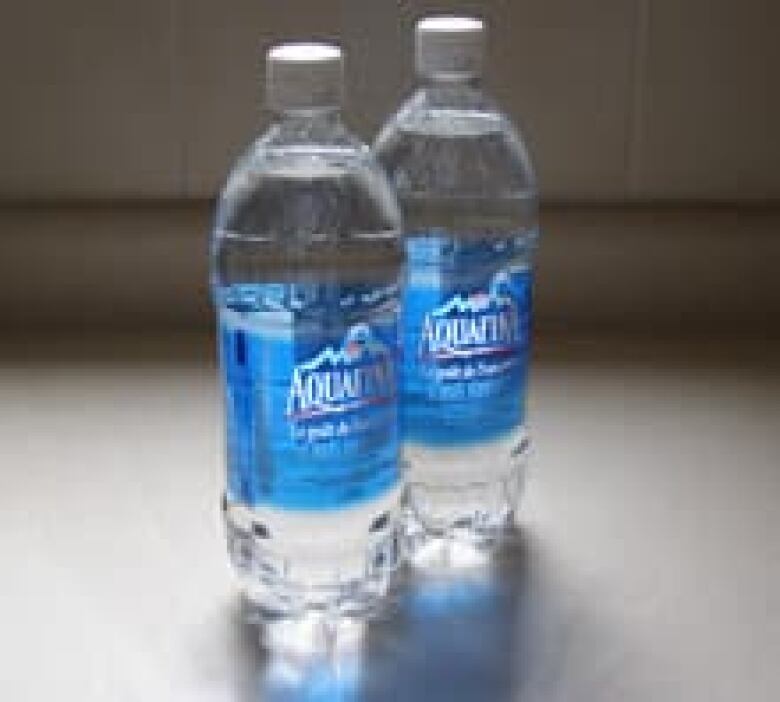Aquafina labels to spell out tap water source
Water originates from public reservoirs
The U.S. manufacturer of Aquafina bottled water will soon revise the product's label to clearly show the drink is made with treated tap water.

Aquafina bottles sold in the U.S. are now labelled "PWS," but the new labels will spell this out as"Public Water Source," the brand's owner PepsiCo said on Friday.
A bottle of Aquafina sold in Canada currently shows the source as "water from the public distribution of Mississauga [Ont.]," but the company said it also usesa public source of water in Vancouver.
The bottler of the water in Canada, Pepsi-QTG [Quaker-Tropicana-Gatorade] said on Friday that it's reviewing the U.S. label change and willbe making a decision shortly as towhether the Canadianlabel needs to be revised.
The Boston-based group Corporate Accountability International had for months been pressuring the New York-based company to change itsAquafina label.
The group said PepsiCo was guilty of misleading marketing practices to "turn water from a natural resource into a pricey consumer item."
"If this helps clarify the fact that the water originates from public sources, then it's a reasonable thing to do," PepsiCo spokeswoman Michelle Naughton said on Friday.
Corporate Accountability International is also pressing for similar concessions from Coca-Cola, which owns the Dasani water brand.
"We don't believe that consumers are confused about the source of Dasani water," Coca-Cola spokeswoman Diana Garza Ciarlante told the Associated Press. "The label clearly states that it is purified water."
Both companies use reverse osmosis, a procedure that forces water through a membrane with very small holes.
People can buy their own reverse osmosis units, but the method isnot water-efficient, according tothe Canada Mortgage and Housing Corporation (CMHC).Alot of the water that passes through, unless it's collected for other uses, goes down the drain.
In some cases, where water is already free of dissolved solids, two litres of water may be needed to produce one litre of finished water, the CHMC says. In other cases, four or five litres of water may be used to produce one litre of filtered water.
With files from the Associated Press












_(720p).jpg)


 OFFICIAL HD MUSIC VIDEO.jpg)
.jpg)



























































































